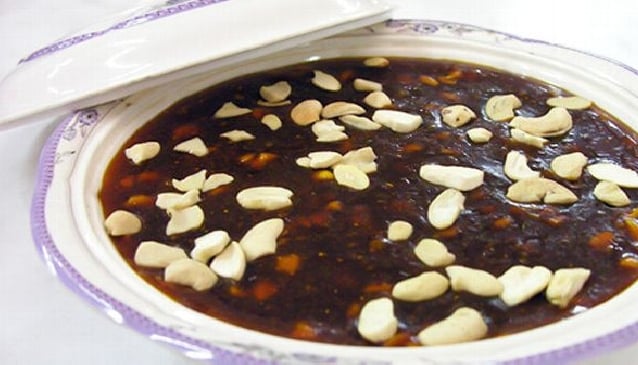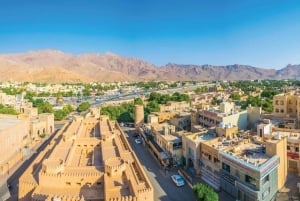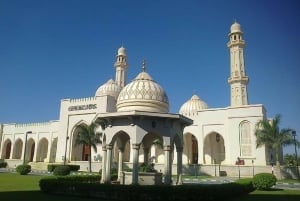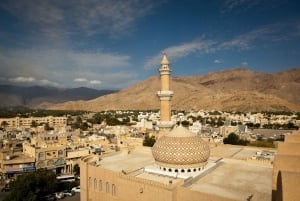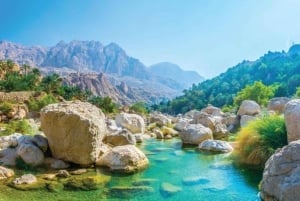Omani Halwa
The recipe is subject to much debate as every Omani has their own personal favourite.
Book Top Experiences and Tours in Oman:
If youʻre booking your trip to Oman last minute, we have you covered. Below are some of the top tours and experiences!- Muscat: Full-Day Nizwa Tour with Audio Guiding
- Muscat: Dolphin Watching and Snorkeling Tour
- Khasab: Dolphin Watching Day Tour with Snorkeling & Lunch
- From Muscat: Wadi Shab & Bimmah Sinkhole Full-Day Tour
- From Khasab: Fjords of Musandam Dhow Cruise & Buffet Lunch
Translated as ‘sweet’ from the Arabic word halwa, a trip to is not complete without trying some of this delicious local delicacy, Omani halwa. Halwa is considered as a symbol of Omani hospitality and is traditionally served with Omani kahwa (coffee), either dometically or in restaurants in Oman.
The calorie-laden treat is eaten in every home in the Sultanate, particularly on special occasions such as wedding celebrations and Ramadan and Eid feasts.
The recipe is subject to much debate as every Omani has their own personal favourite, with ingredients and proportions varying between makers and from different locales of production. In fact, halwa-makers are fiercely protective over their secret recipes – their livelihood may depend upon it.
The basic recipe though calls for eggs, sugar, corn flour and fat, combined to produce a gelatinous sweet, which is then flavoured with spices such as cardamom and saffron. Rosewater from the Jebel Akdhar region is sometimes used to infuse the sweet with a delicate floral fragrance.




Dried nuts like cashews or pistachios give the halwa a lovely crunch or fruit such as Omani dates may be added for a distinguished flavour. Or try the type that includes tahini (crushed sesame seeds), which gives the halwa a wonderfully crumbly, sand-like texture. You will be powerless not to chase after every dropped crumb on the plate.
The type of fat used is controversial; Ghee (animal fat) is reportedly preferable to plant oils as it supposedly keeps the flavour and texture better for longer, not that a dish of it is likely to remain lying around uneaten for any length of time!
The colour of the halwa is dependant on the type of sugar used; dark red or brown halwa is usually indicative of the inclusion of brown sugar. Purists have even hinted to the use of food colourings by some unscrupulous halwa-makers, as a short cut to achieving the desirable burnt caramel colour!
You can find three main types of halwa in Oman. Sultani is considered the finest type and is given as gifts to visiting dignitaries from HM Sultan Qaboos along with Special halwa and Original halwa.
The halwa-making process is a laborious one, with the dedicated chef stirring the gigantic pot of bubbling hot, sticky substance for up to three hours. A momentary lapse in attention and the halwa could stick to the pot and be ruined.




The pot is cooked over gas or a large wood fire, with wood being preferred as it is said to produce the best result, despite it requiring more effort to maintain the constant temperature.
The resulting gooey confection is then poured into a large clay dish or smaller bowls and decorated with nuts before being left to set for a day or two. Halwa can be preserved beautifully for up to four months without the need for refrigeration, very handy if you live in the mountains or desert.
The sweet can be eaten with a spoon straight from the bowl or it can be chopped into bite-sized chunks and served more gracefully from a plate.
So where can the best halwa in Oman be found? A difficult question, as small but industrious halwa factories are dotted all around the country, especially Muscat, the capital, including Muttrah Souq, the markets at Seeb and the royal neighbourhood of Barkah. However, there happens to be a supremely good version, produced at a small family run business, Bin Mohammed, in the Bowshar area of Muscat. The owner and halwa-maker Hamid will not reveal his secret recipe, except for passing it down to his relatives, hoping to continue the family tradition of sweet making for generations to come.
Today, the ancient art of halwa-making is taking a modern direction, with health conscious consumers asking for a healthier kind to be produced. In response to this, The Sultan Qaboos University is currently devising a recipe lower in fat and sugar than the heritage variety. Alternative ingredients are being tested for inclusion, which will provide the same consistency, texture and flavour whilst being beneficial to health. Sounds like a winning formula!


